"United we stand; divided we fall" is a guiding principle in many contexts except in market research. This is because if you want to understand the preferences of your target market, you must divide them into groups, which is what we call customer segmentation.
Due to its importance in market research, customer segmentation has become one of the standard practices in developing effective market strategies for organizations. In this article, we will let you in on its advantages and show you how to segment your customers using Formplus.
What is Customer Segmentation?
Customer segmentation is the process of placing your customers into small, defined categories based on common characteristics that they share. This makes it easier for organizations to know what each group needs and to also create and implement marketing strategies that are peculiar to each customer segment.
Different customer segments are created by organizations depending on the type of marketing. In B2B marketing, common customer segmentation variables are industry-type, location, and staff strength while demographic variables like age and marital status are used in B2C marketing.
Customer segmentation influences business profitability and this comes from gaining specific insights into your consumers and existing pain points which your product seeks to solve or relieve. Organizations typically create a customer segmentation model that influences resource allocation to different consumer categories and markets.
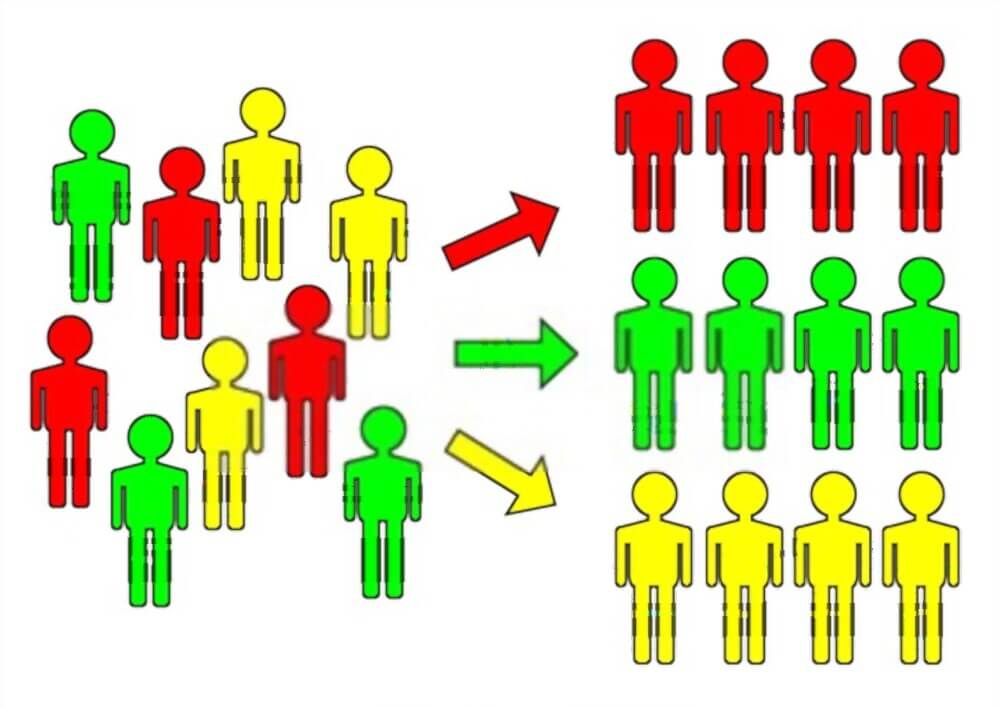
Why Use Customer Segmentation?
Many organizations use customer segmentation to boost customer profitability; that is, identifying the consumer segment that has the most purchasing potential for your product and investing accordingly. Many companies use the 80-20 rule here – identifying the 20% customer segment that can generate 80% of gross profits.
Customer segmentation also gives you better insights into market needs, helping you tailor your product accordingly. This helps you improve the overall customer experience of your target market and boost customer retention and repeated patronage.
Types of Customer Segmentation in Marketing
In carrying out customer segmentation, organizations adopt a range of simple to complex models including demography, psychography, status, and behavior. Let's examine how these work in different contexts.
- Demographic Segmentation
Demographic segmentation is the categorization of customers based on demographic variables including education, age, and gender. It provides unique insights into your target market and what they need, helping you create tailored selling points for your products.
Demographic segmentation can be carried out through the collection of census data, analytics software, consumer insights, and surveys. Creating subsets within a defined target market makes it possible for organizations to utilize resources effectively and create specific marketing strategies to capture targeted groups.
This type of customer segmentation helps organizations to establish long-term relationships with consumers because they identify with their needs. Demographic segmentation is important because consumer choices are usually influenced by numerous internal and external lifestyle factors.
- Recency, Frequency, and Monetary (RFM) Segmentation
The RFM customer segmentation model is used when organizations seek to categorize customers based on how often they make purchases. It takes into consideration the recency of past purchases, how frequently consumers make use of your product, and the overall monetary value of the purchases.
This helps organizations to determine their customer retention capacity, the value of their products and services, and how their products fit into the everyday lives of the consumers. It is also used to identify high-income customers with high purchasing powers.
- High-Value Customer Segmentation
High-value customers are individuals with high purchasing power and high product demand; that is, your product is an important part of their daily lives. It is an offshoot of the Recency, Frequency, and Monetary customer segmentation model.
Placing high-value customers in separate categories helps you to identify their preferences and characteristics, and this information proves useful for customer acquisition.
- Customer Status Segmentation
Organizations largely categorize customers as active or lapses based on the recency of purchases; that is, the last time they purchased a product or service. This can be broken into smaller categories like time frames.
Organizations that deal with everyday products like non-luxury items define active customers as individuals who have made multiple purchases within 12 months. On the other hand, lapsed customers are individuals who have not bought any product or needed your organization’s services in the last 12 months.
- Behavioral Segmentation
A customer's behavioral patterns could provide great insights for your product and organization in the future. In the same way, major life changes that affect consumer behaviors like childbirth and marriage can directly impact purchasing patterns and the preferences of your target market.
For instance, when a consumer relocates to another city, he or she may stop using your product due to availability challenges. Tracking consumer behaviors and life changes help organizations to modify their products to suit the changing needs of the consumers.
- Psychographic Customer Segmentation
This deals with the psychological disposition of the consumers in terms of their personalities and beliefs. To collect this information from consumers, you can create surveys with Likert scale questions that ask consumers to indicate whether they agree or disagree with a particular question.
Tips for a Successful Customer Segmentation
- Clearly define the goal of the process. An easy way to do this is to tie customer segmentation to your predefined marketing goals and objectives.
- Be strategic with your segmentation and avoid unnecessary categories. Customer segmentation must be precise and practical so; only create a segment when there is the need for one.
- Try out A/B testing as you work on breaking your customers into clearly defined categories.
- Ensure that customers in each segment are defined by similar behaviors, attributes, and characteristics.
- Ensure that each segment is distinct from the other. Segments with overlapping features should be merged.
- Create effective communication channels for each customer segment.
- Understand the value of each segment and gather information accordingly.
- Target the right customers.
Top Form Templates for Customer Segmentation
Use this demographic survey template to gather insights about your customers by collecting information about different market demographics such as age, education, marital status, employment status, and the like. You can edit this template in the Formplus builder to better suit your customer segmentation needs.
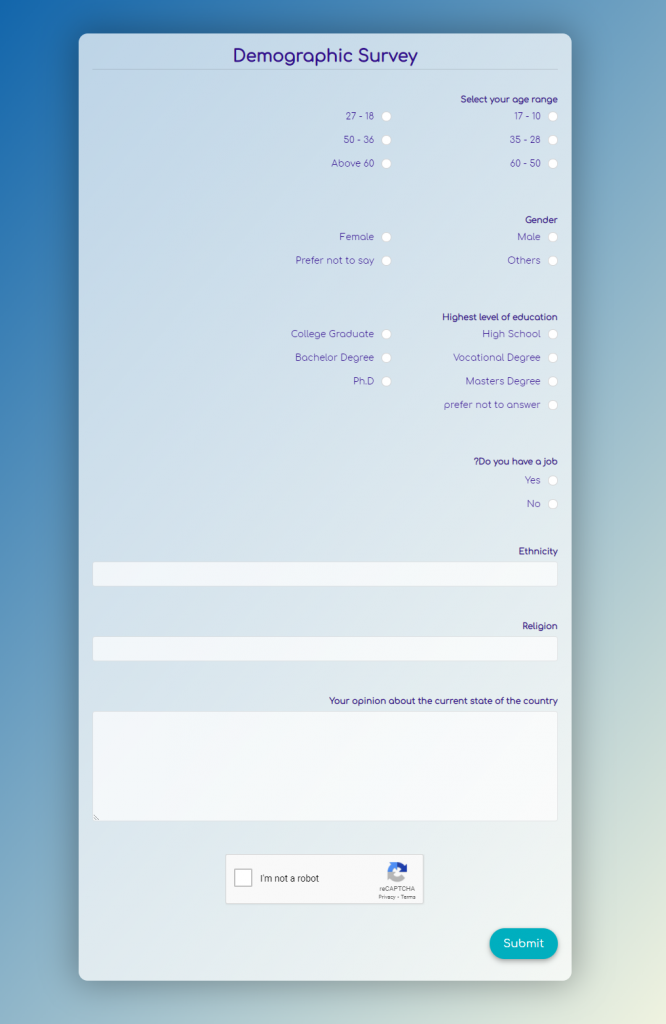
This survey helps you to gather your customer’s opinions regarding product advertisements. The Formplus ad testing survey makes it easy for customers to communicate their perceptions and influence your marketing strategies for increased value and profitability.
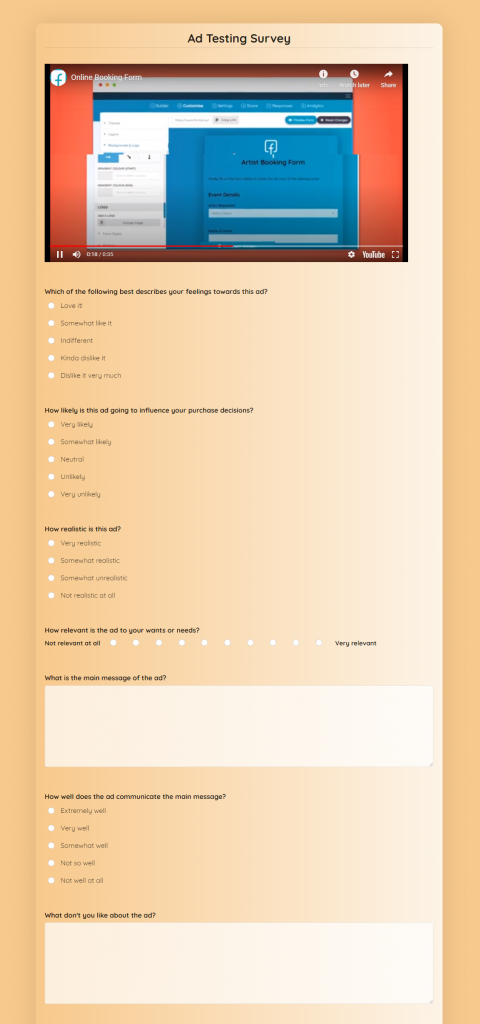
Use the Formplus product evaluation survey to gather insights on consumers’ preferences. This survey allows consumers to communicate how they feel about different product features and your overall service delivery.
Use this online feedback form to collect information from customers about your product. You can include demographic questions in this form and also ask questions that provide insights into the consumers' behaviors and preferences. Modify this online feedback template to serve the unique needs of your organization.
This market research survey helps you gain better insight into your customers’ needs and preferences. With this form, you can collect research data ranging from the purchasing power of your consumers to product preference and general demographic information.
Use this survey to identify areas of your product needing improvement. This form allows customers to share their experiences with making use of your product or service and it also reveals the psychological disposition of your users for customer segmentation.
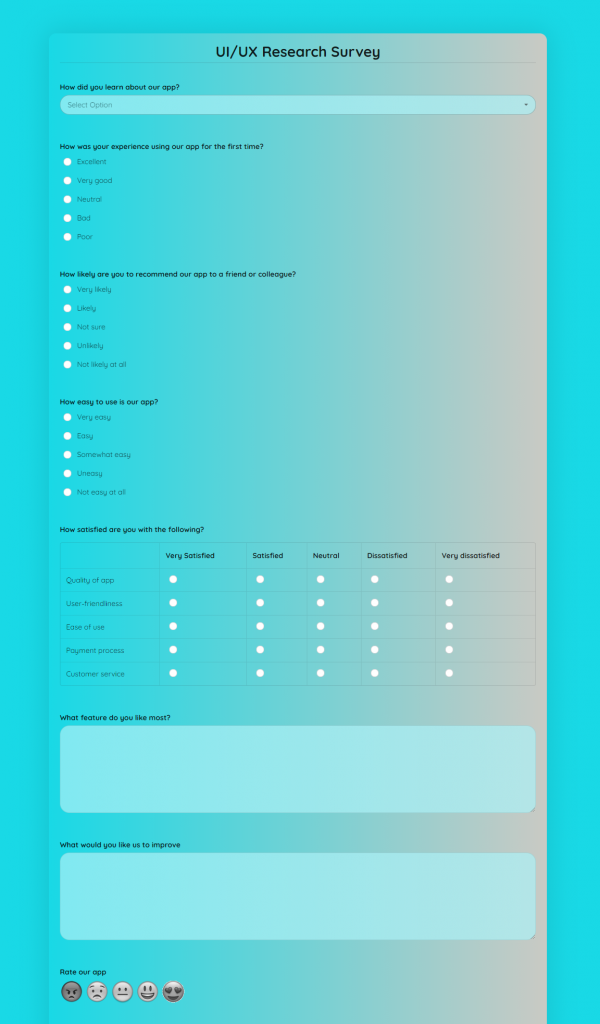
This survey helps you to know where your brand stands in the market. In addition to this, it helps you gather useful data for customer segmentation such as identifying active and passive customers, and also discovering high-value customers. You can also use this survey to gain insights into the psychological disposition of your customers about your product or service.
Use this survey to find out how consumers feel about the pricing of your product. This survey also helps you to categorize consumers based on how often they use your product and to break them into status segments while identifying high-income customers.
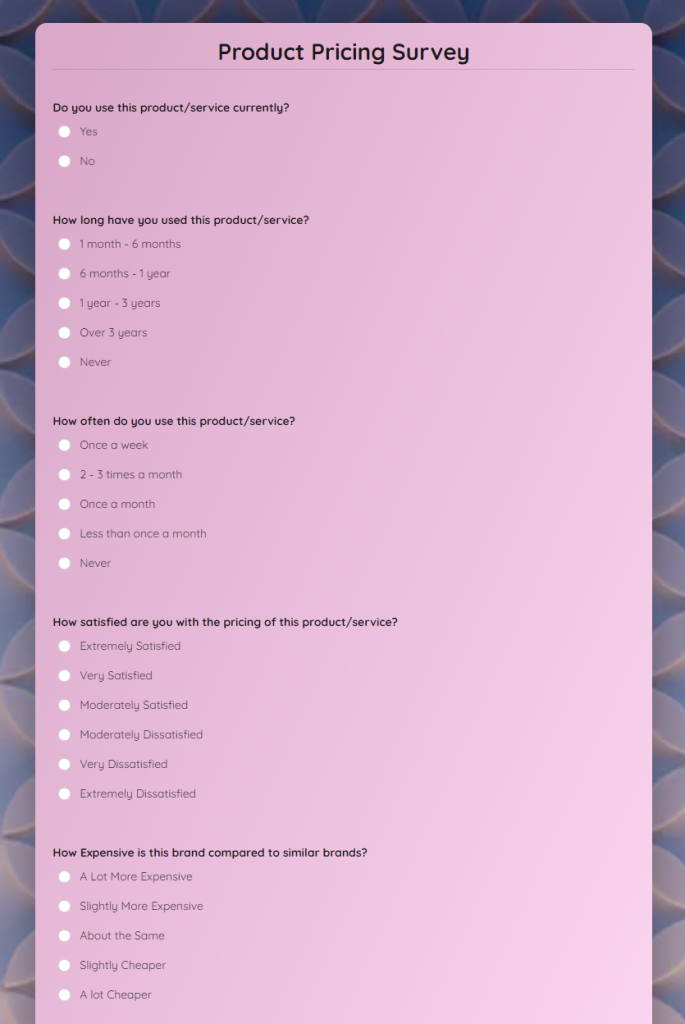
Importance of Customer Segmentation
Customer segmentation plays specific and important roles for businesses. Here are a few reasons your organization should prioritize customer segmentation:
- Customer segmentation influences product marketing by helping organizations to create precise marketing campaigns that appeal to specific consumer categories. This helps each customer segment to see the unique value of your product as it appeals to their needs.
- Customer segmentation also helps you identify the best communication channels for your business. For instance, if most of your customers are millennials, social media marketing may be the best channel to communicate with them.
- Based on the unique needs and preferences of different customer segments, you can identify new ways for product improvement or how to optimize your service delivery process and channels.
- Customer segmentation also boosts customer satisfaction and improves the overall customer experience.
- It helps you to create the best pricing structure for your product or service. Pricing is an important market variable as customers may not readily purchase goods priced beyond their spending power.
- By breaking your customers into segments, you would be able to identify the most profitable customer category and focus on them accordingly.
How to Create a Customer Segmentation Survey with Formplus
Follow these easy steps to set up your customer segmentation survey on Formplus and gather insights from users and consumers.
- Sign in to Formplus to access the easy-to-use form builder. If you do not have a Formplus account, click here to create one.
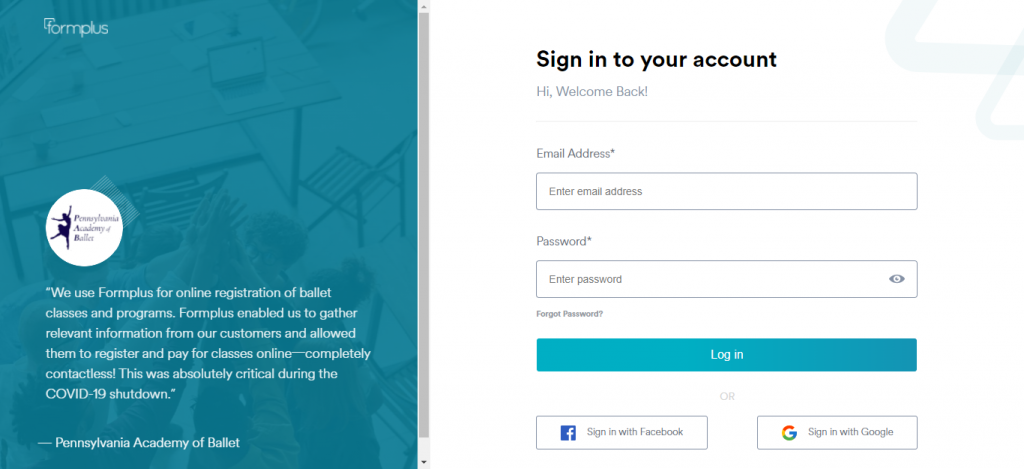
- On your account dashboard, click the "create new form" button to begin.
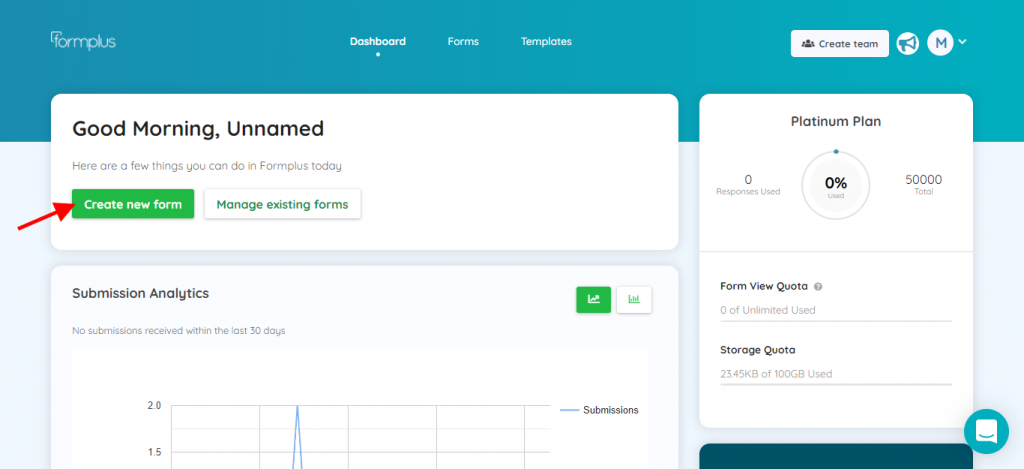
- Drag and drop preferred fields from the builder's inputs section into your form. You can edit the fields by clicking on the pencil icon on the right corner of each field.

- Save your form to access the customization section. Here, you can modify the appearance of your form by adding your organization's logo and adding preferred background images.
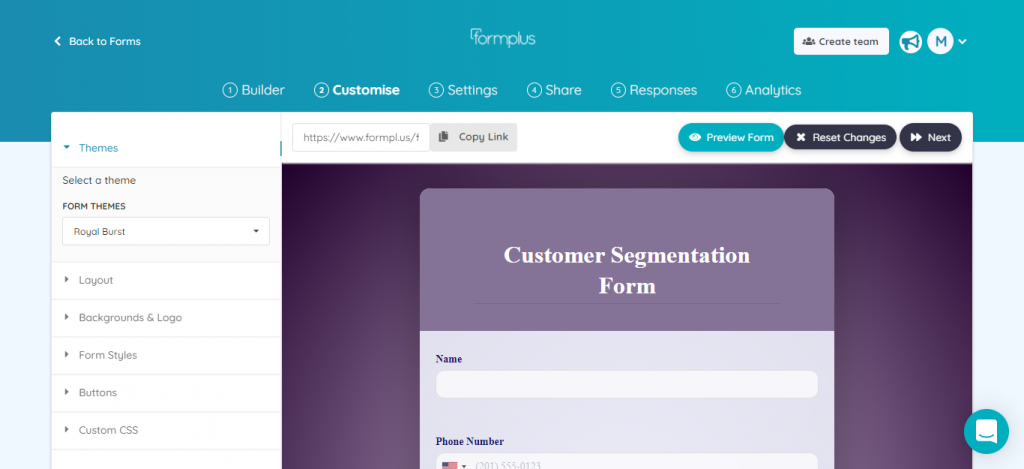
- Copy the form's URL and share it with your customers. You can use the Formplus multiple form sharing options to administer your customer segmentation survey.
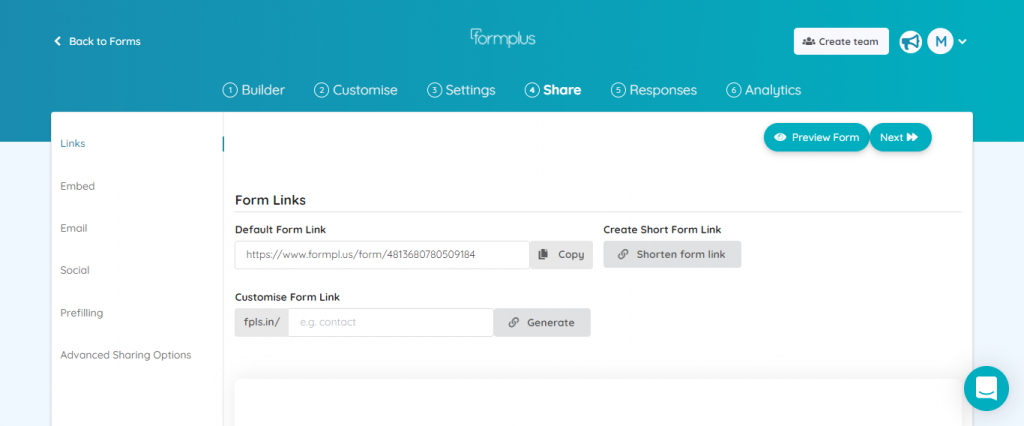
- Track data trends and gain insights into your data collection process in the Formplus form analytics dashboard. Here, you can access different data bothering on your customer segmentation survey and also build custom visual reports using the reports summary tool.
Conclusion
Organizing your customer base into smaller groups based on similar characteristics does a lot for your organization and your product. Apart from helping you understand customers’ needs better, customer segmentation plays a major role in the effective utilization of resources for businesses.
In this article, we've shared different types of customer segmentation models and also shown you how to create and administer customer segmentations surveys with Formplus. You can also modify any of the shared templates to help you collect useful information from customers.